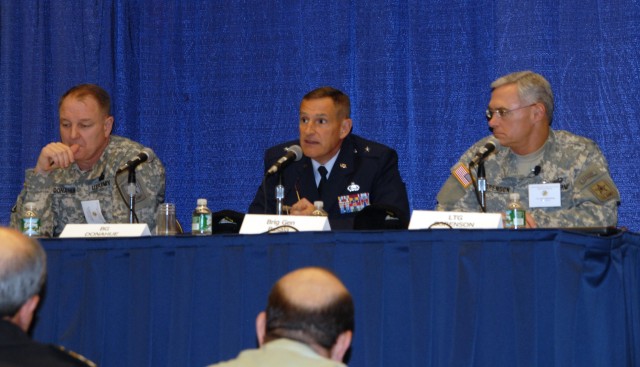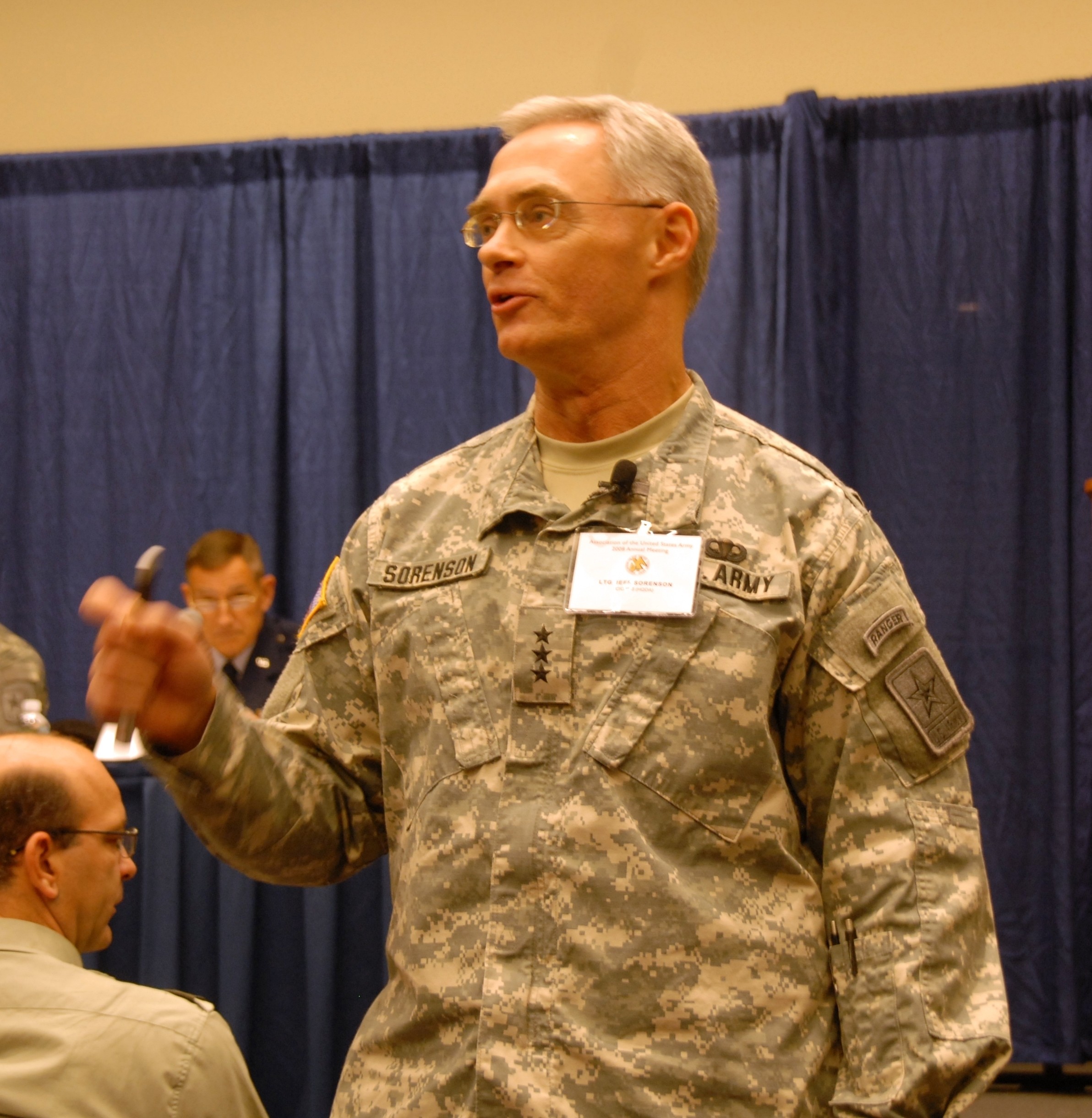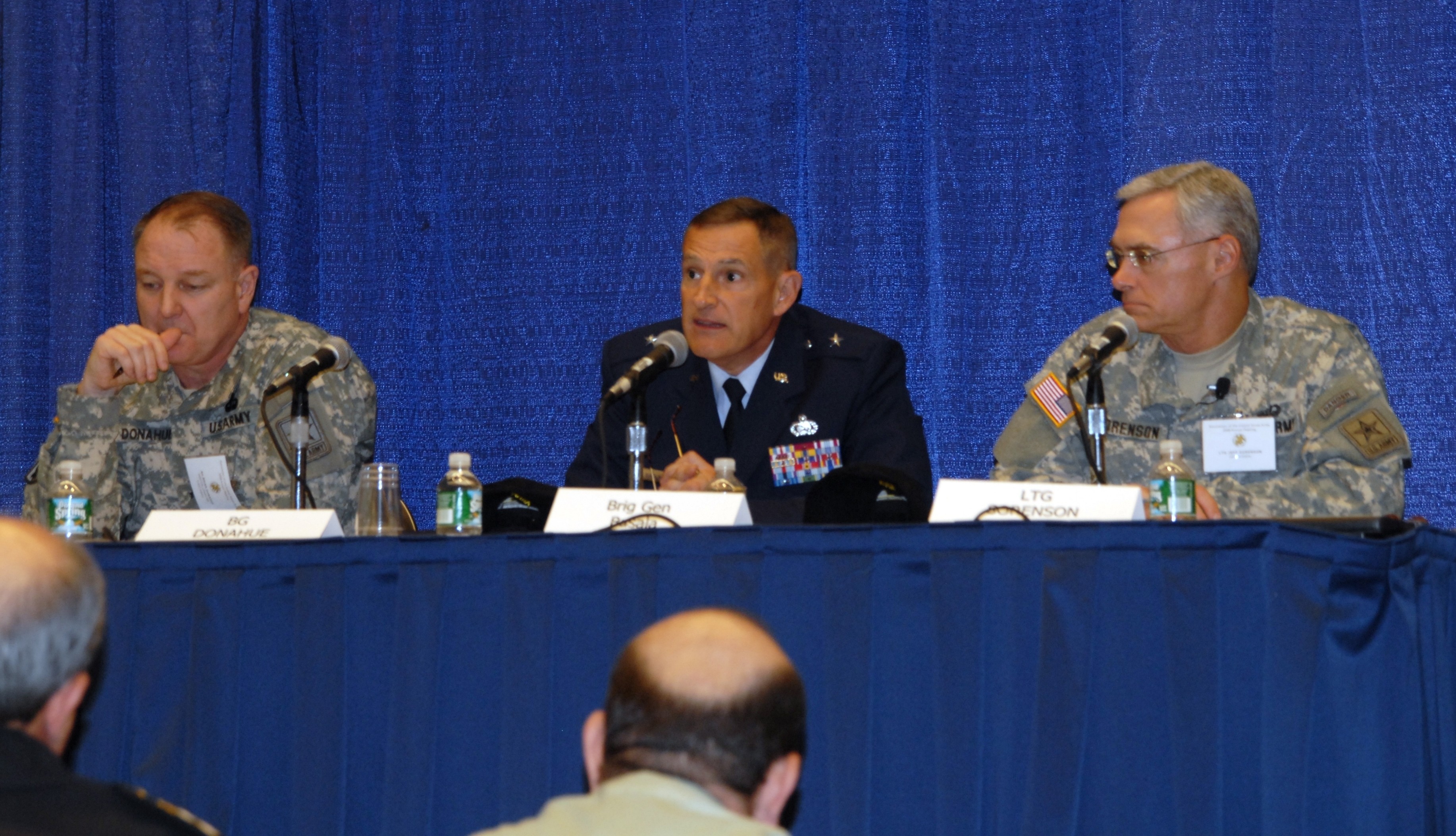WASHINGTON (October 7, 2008, Army News Service) - Army leadership discussed the importance of transforming LandWarNet to an enterprise structure in order to enable Warfighter capabilities Monday, at the Association of the United States Army Annual Meeting and Exhibition.
Lt. Gen. Jeffery A. Sorenson, chief information officer/G-6, led a panel discussion, "Transforming LandWarNet for the Warfighter," to help explain how LandWarNet is evolving to deliver needed capabilities to the Solider more effectively and efficiently.
Sorenson explained that while LandWarNet exists, it doesn't have the capabilities it needs today, such as a single identity for the Soldier and the ability to connect to the network anywhere in the world. The LandWarNet transformation to an enterprise structure will provide those capabilities and others the Soldier needs, he said.
An enterprise, Sorenson said, is a company, organization or business defined by its organization and governance structure.
As defined in the Army Posture Statement, LandWarNet is the Army's portion of the Global Information Grid, and it moves information through a seamless network, enabling the management and use of warfighting and business information.
Because the Army is moving to a modular, expeditionary force, LandWarNet must follow suit and become more streamlined through an enterprise structure. The Army plans to achieve that goal with the use of Network Service Centers, which federate networks and creates a seamless network where ever a Soldier is, reducing cost, Sorenson said.
The use of NSCs "can save at least 15 percent, that's one billion and a half," he said.
The Global Network Enterprise Construct, which will be supported by NSCs and function as the basis of the transformed LandWarNet, will optimize Soldier connectivity by providing the basics to get Soldiers connected.
"These capabilities are essentially what we are trying to build out for our Soldiers to improve their ability to communicate and function in terms of satisfying expeditionary needs," Sorenson said.
The Army's relevance is determined by how fast it can get into the fight, Brig. Gen. Brian Donahue, director of LandWarNet, G-3/5/7, said. LandWarNet will enable the preparation for war, the transition to war, and all phases of combat operations, Donahue explained, increasing the speed and efficiency of Soldiers and therefore, the Army.
Having connectivity at all phases of combat operations allows the Soldier to hit the ground running and immediately engage the enemy, he said, as well as giving Soldiers access to accurate information quickly, increasing their lethality.
"Every single Solider must touch the network," Brig. Gen. Susan Lawrence, NETCOM commanding general, said. "And as you look at Future Combat Systems, and you look at what brings the precision engagement, the Soldiers, the unmanned sensors and the common platforms together, it is the network."
LandWarNet will be flexible, and will give Soldiers a single identity so they can access the network anywhere, Lawrence said. It will allow Soldiers to have connectivity from "the desktop to the foxhole," she said.




Social Sharing